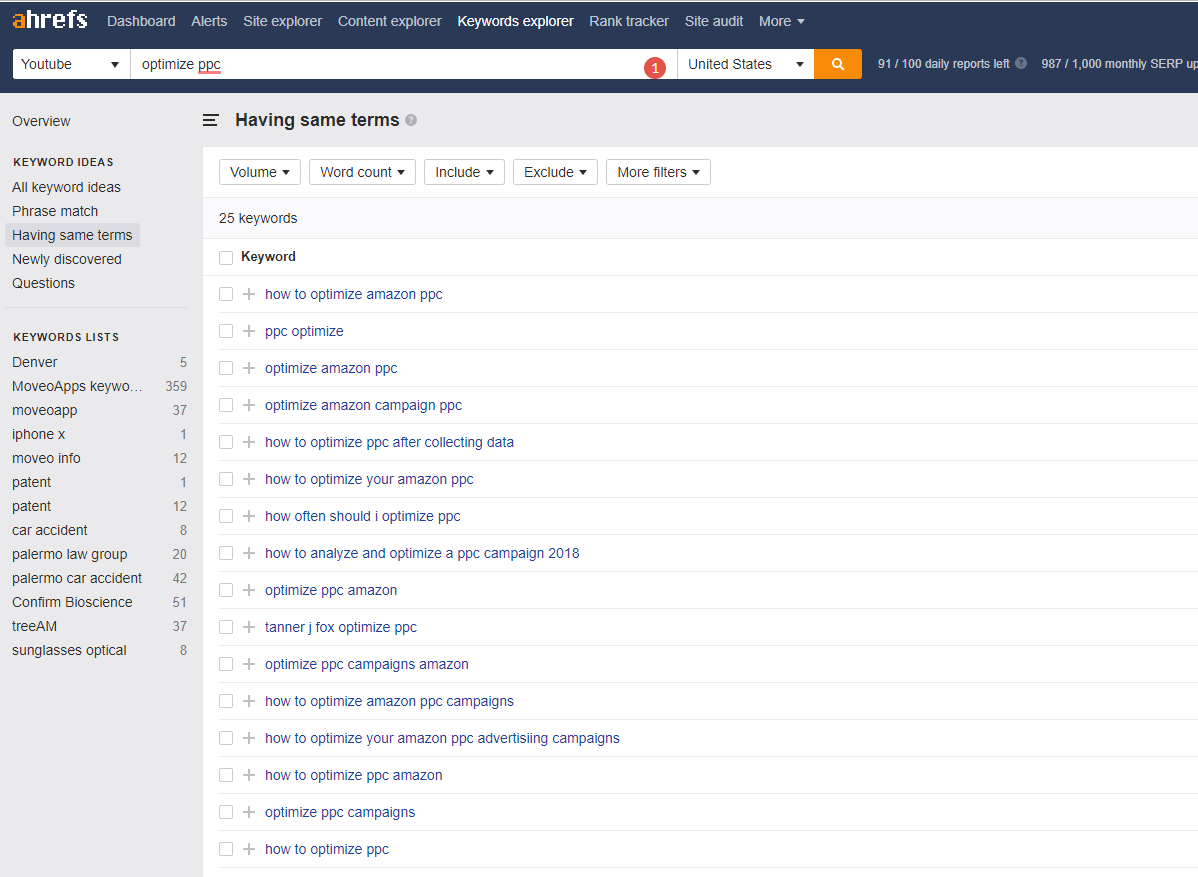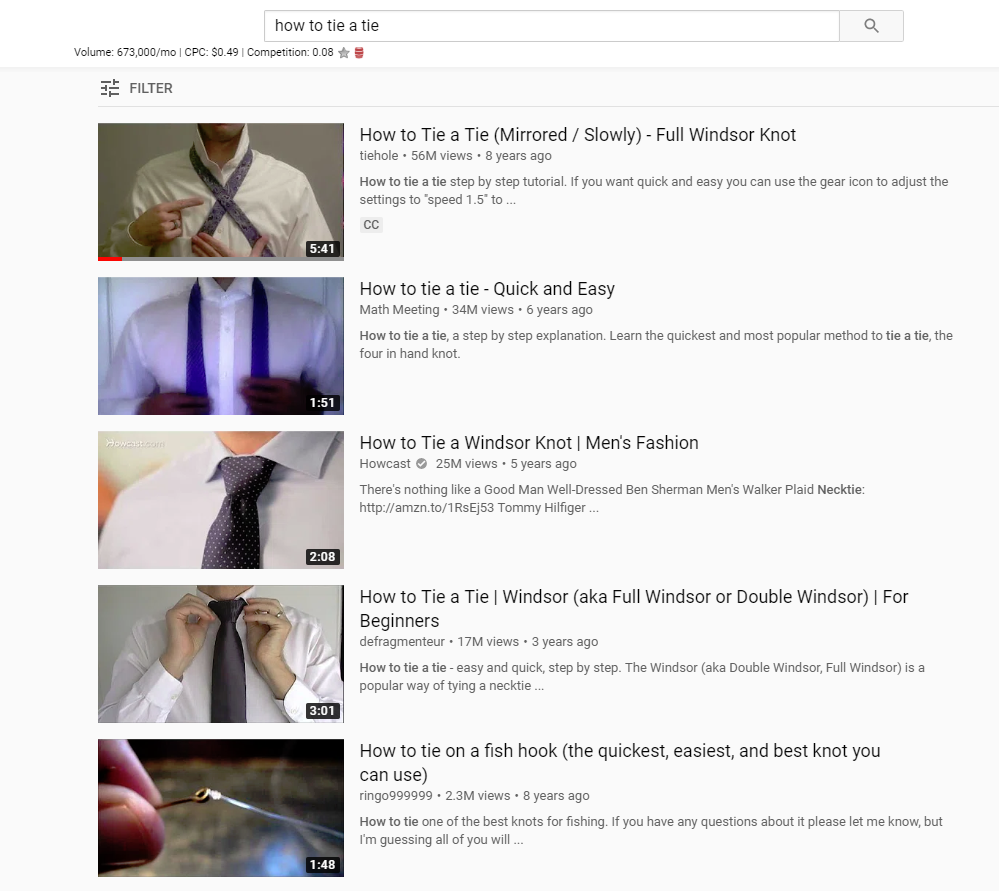The rising popularity of video content is causing marketers across the board to flock to the bandwagon.
Unlike many “shiny new objects” in the marketing world, it’s abundantly clear that video is here to stay.
In fact, research from HubSpot indicates that more than half of consumers want to see more video content from the brands they know and love.
Similar to text-heavy content, optimizing for search is generally the difference in whether people see your videos.
So, like many others, you’ve decided to embrace the trend and allocate your budget to creating video content. But the SEO results just aren’t coming.
You’ve had a great deal of success with many of your blog posts, but why aren’t the videos following suit?
Well, there are many reasons why your videos might not be getting the search engine love they deserve. Let’s talk about four of the big ones.
1. You Aren’t Using an Optimized Transcript
Did you know that most videos on Facebook are watched on mute?
This alone makes the use of transcripts a no-brainer!
However, transcripts serve a bigger purpose than helping the hard-of-hearing and providing the ability to consume a video without bothering people around you.
Transcripts can make your videos more crawlable to search engine bots, which in turn, gives them more context to rank on!
Now, when you create the transcript of your video, the keyword usage might look a little different than it would in a blog post.
After all, written verbiage can sound a bit different when spoken, as opposed to being read.
The key is to build the transcript around conversational keywords/phrases. This involves a healthy understanding of user intent.
In the world of video marketing, you are typically trying to rank for long-tail keywords.
To put it in perspective, YouTube searches that start with “how to” are growing by 70% year over year!
For example, you might have a blog post that is ranking well for the search term “optimize PPC.”
Using Ahrefs, let’s see what keyword ideas we get when we set the explorer tool to YouTube:

You’ll notice that there is a decent amount of trending key phrases that start with “how to.”
So, while you should certainly align video SEO with your text-focused keyword strategy, optimizing your transcript for more conversational terms/phrases could be the key to earning those high video rankings.
2. Your Thumbnail Image Isn’t Drawing Interest
When looking at the thumbnail image itself, its role in the SEO value of your video isn’t as direct as the title, description, tags, etc.
However, even if you’ve done everything right to get your video to rank, you can snatch defeat from the jaws of victory with a bad thumbnail image.
The thumbnail image is the first impression people get of your video, and sequentially, impacts their decision to click.
Think of it this way. Backlinko once analyzed over 1 million YouTube videos to learn more about video SEO. Here were some of the main takeaways:
- Videos with lots of comments experienced higher rankings.
- The number of shares a video generated was strongly tied to Page 1 rankings.
- Likes played a big role in how a video ranks.
- There was a minor correlation between channel subscriber count and rankings.
Now, if your thumbnail images are discouraging people from viewing your video content, you aren’t going to get many comments, shares, likes, or more subscribers.
Take the time and develop a high-quality, custom image to use as your video’s thumbnail.
Videos with custom human thumbnails received 30% higher play rates than those without, according to Wistia.
When you create your thumbnail, make sure it’s relevant to the subject you are trying to rank for.
For instance, let’s search for videos about “how to tie a tie.”

Notice how the top-ranked videos (with millions of views) all feature a person performing the action.
So, in many ways, the thumbnail image is the most important piece of the puzzle!
The last thing you want is to spend copious amounts of time and effort creating stellar videos, only to have it all flushed down the toilet by a bad thumbnail.
3. Your Videos Aren’t Properly Aligned with Your Webpages
Turning the focus to your website, getting webpages to rank for video content can be a challenge – as there are many factors that go into the task.
There are several glaring reasons why webpages with video content struggle to rank.
The biggest issue stems from the page itself – this applies to both traditional blog posts and pages with video.
Simply put, you cannot solely rely on an SEO-friendly video to carry the full load of ranking on the search engine results pages.
The page it lives on needs to be properly optimized as well. Otherwise, the search engines probably won’t crawl it in the first place – no matter how great the video may be.
- Does the page load quickly?
- Is it secure?
- Have you optimized the page’s content (other than the video) for keywords?
Another big factor is relevancy. Is the video closely related to the rest of the content?
For instance, let’s say you have a resource page on your website about preparing a pool for the summer months.
If you include a video on the page about closing down a pool for the winter months, you are sending mixed signals to the search engines.
In turn, you are potentially hurting the rankings of both the video and the webpage.
The last factor I’m going to address is the number of videos on a page.
If you place multiple videos on your website and want to rank for all of them, you need to create separate pages for each. Or, place the one you want to rank for the most at the top.
“Google typically indexes only one video per page,” according to Phil Nottingham, video SEO expert at Wistia. “If you’re including multiple videos on a page, ensure that video is first.”
As of now, the search engine bots will stop crawling for video content after the first one. So, you are smart to make the video you want to rank for the focus of the page.
4. You’re Creating the Video with the Same Approach as a Blog Post
If you see tons of SEO success with your blog posts, it might seem logical to build out your videos in a similar fashion.
While the message can be the same in both a video and a blog post, the delivery is much, much different.
In a blog post, you can provide extensive context, examples, detailed analysis, etc.
In video, you don’t always have this luxury.
Keep in mind, watch times and completion rates play a big role in how video content is ranked – YouTube confirmed this long ago.
If your videos resemble someone reading an extensive blog post, you’re probably going to bore many people to tears. Obviously, this is going to impact your completion rates.
When you create video content, you need to streamline your main points and provide quick takeaways. In other words, keep it short and sweet.
A good strategy is to map out your most important points, then spell them out in the video.
Videos between one and two minutes retain roughly 75% of their viewers, whereas four and five-minute videos retain less than 60% of their viewers, according to Wistia.
Now, this doesn’t mean you have to keep all your videos super short; do your best to eliminate extra fluff wherever possible.
Always remember, attention spans are on the decline. When creating video content, losing viewers is much easier than you think. Spell out your message clearly and don’t beat around the bush!
Summary
As the web continues to transform into a video-centric world, getting your videos to rank well is hugely important – regardless of whether it’s on YouTube, your website, or any other video platform.
The good news is that many of the SEO attributes that made your blog posts successful carry over to video content. However, the nitty-gritty details of each respective ranking process can be a bit different.
Keep these points in mind and you will be putting yourself in a position to be on the search engines’ good side.
More Resources:
Image Credits
Featured Image: Created by author, May 2019
All screenshots taken by author, May 2019